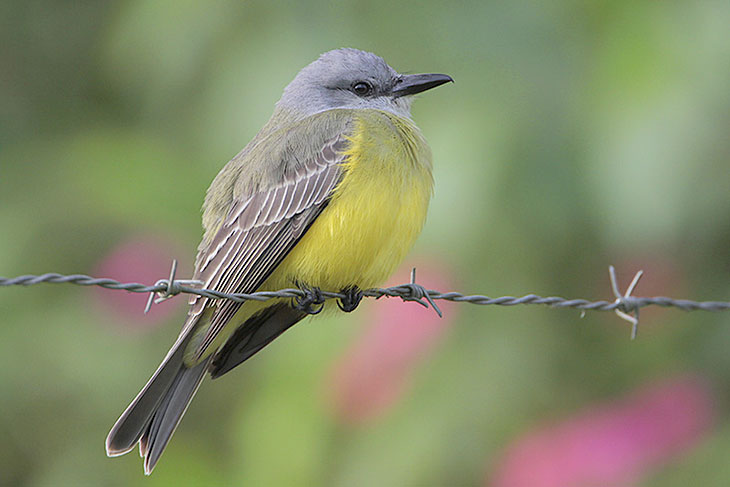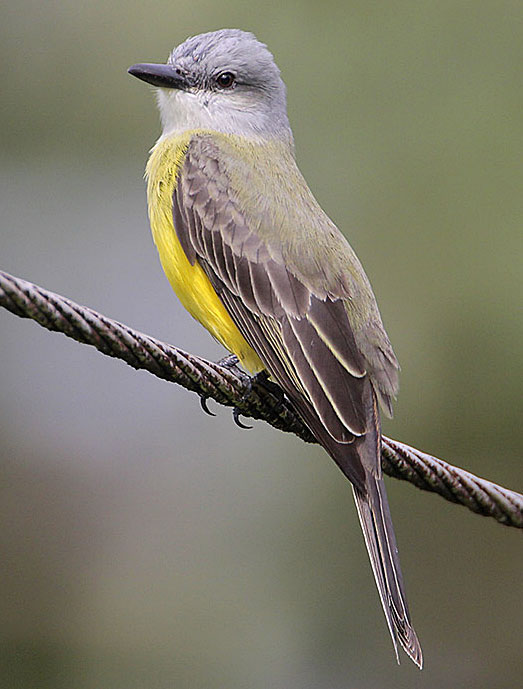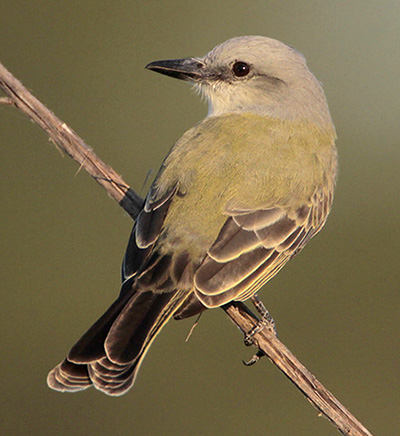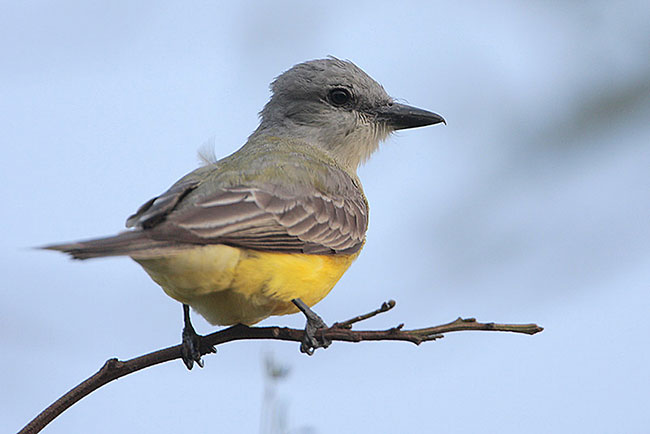Although most of its breeding range lies well south of the U.S., the Tropical Kingbird breeds in Arizona and Texas and has expanded its U.S. breeding range somewhat in recent decades. Tropical Kingbirds breeding in Arizona are migratory, while Texas breeders are year-round residents.
Like other members of its genus, the Tropical Kingbird is known for its aggressive nest defense and its willingness to chase other species of birds if they approach a nest site. In non-migratory populations, pairs maintain bonds year-round.

Description of the Tropical Kingbird
BREEDING MALE

The Tropical Kingbird has grayish-green upperparts, yellow underparts, a gray head with a dark eye line and a white throat, and a brownish tail.
Female
Sexes similar.
Seasonal change in appearance
None.
Juvenile
Similar to adults.
Habitat
Riparian trees and semi-open areas.
Diet
Insects.
Behavior
Forages by flying out from a perch to capture flying insects.
Range
Breeds in southeastern Arizona and in Big Bend National Park, and is resident in south Texas. Also occurs in Mexico, Central America, and South America.
Fun Facts
Tropical Kingbirds often ruffle their crown feathers during aggressive interactions.
Tropical Kingbirds living in areas where they are permanent residents maintain pair bonds year-round.
Vocalizations
The call is a series of rapid “pip-pip-pip” notes.
Scientific name: Tyrannus melancholicus
Although most of its breeding range lies well south of the U.S., the Tropical Kingbird breeds in Arizona and Texas and has expanded its U.S. breeding range somewhat in recent decades. Tropical Kingbirds breeding in Arizona are migratory, while Texas breeders are year-round residents.
Like other members of its genus, the Tropical Kingbird is known for its aggressive nest defense and its willingness to chase other species of birds if they approach a nest site. In non-migratory populations, pairs maintain bonds year-round.
Similar Species
- Couch’s Kingbird is very similar but has a slightly shorter and thicker bill and greener back. Range and call best ID tools.

Photograph © Greg Lavaty.
Nesting
The nest is a cup of plant materials placed in a tree.
Number: 3-4.
Color: Buff with darker markings.
Incubation and fledging:
– Young hatch at 15-16 days.
– Young fledge (leave the nest) in 18-19 days after hatching but remain with the adults for some time.


